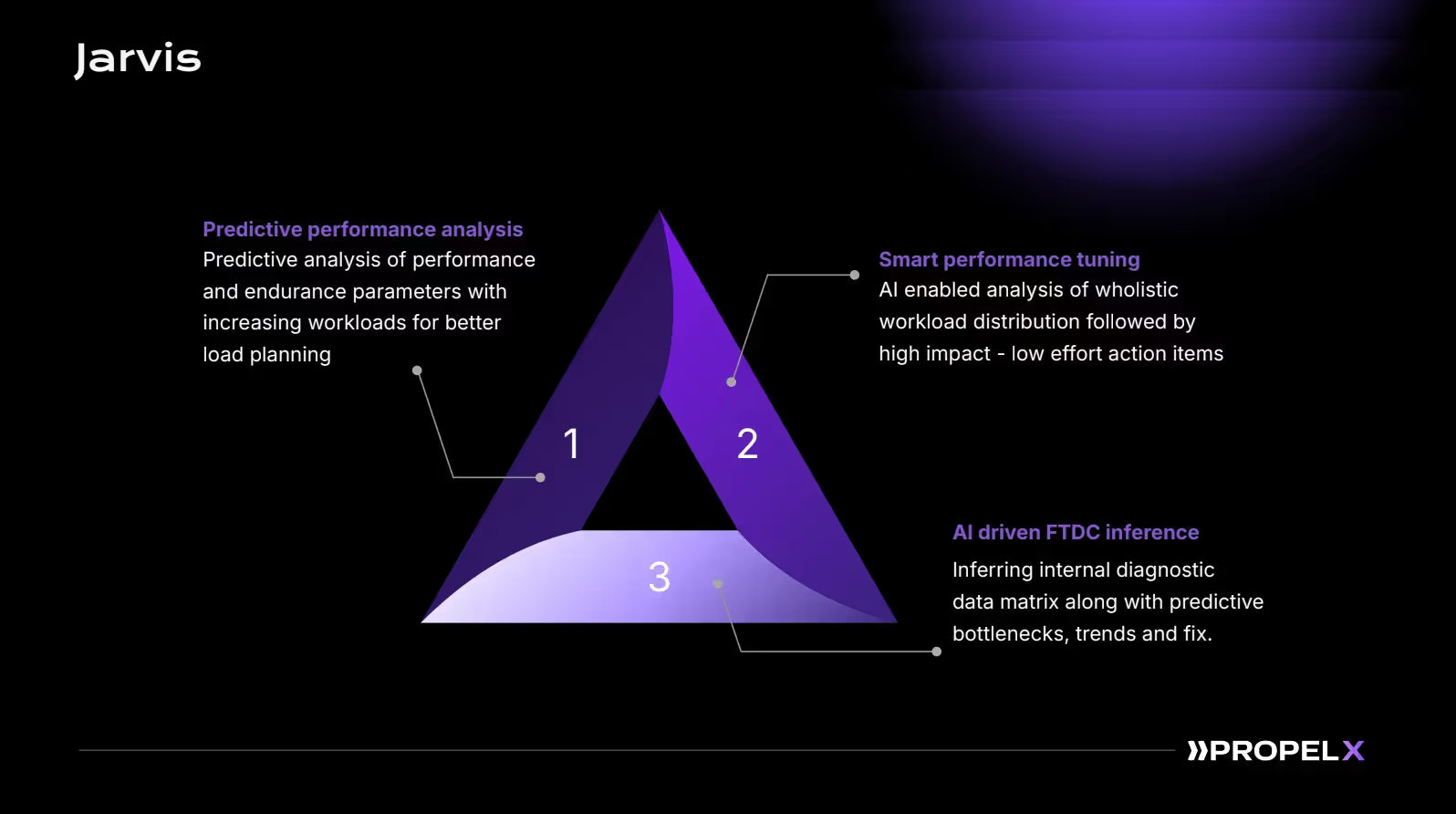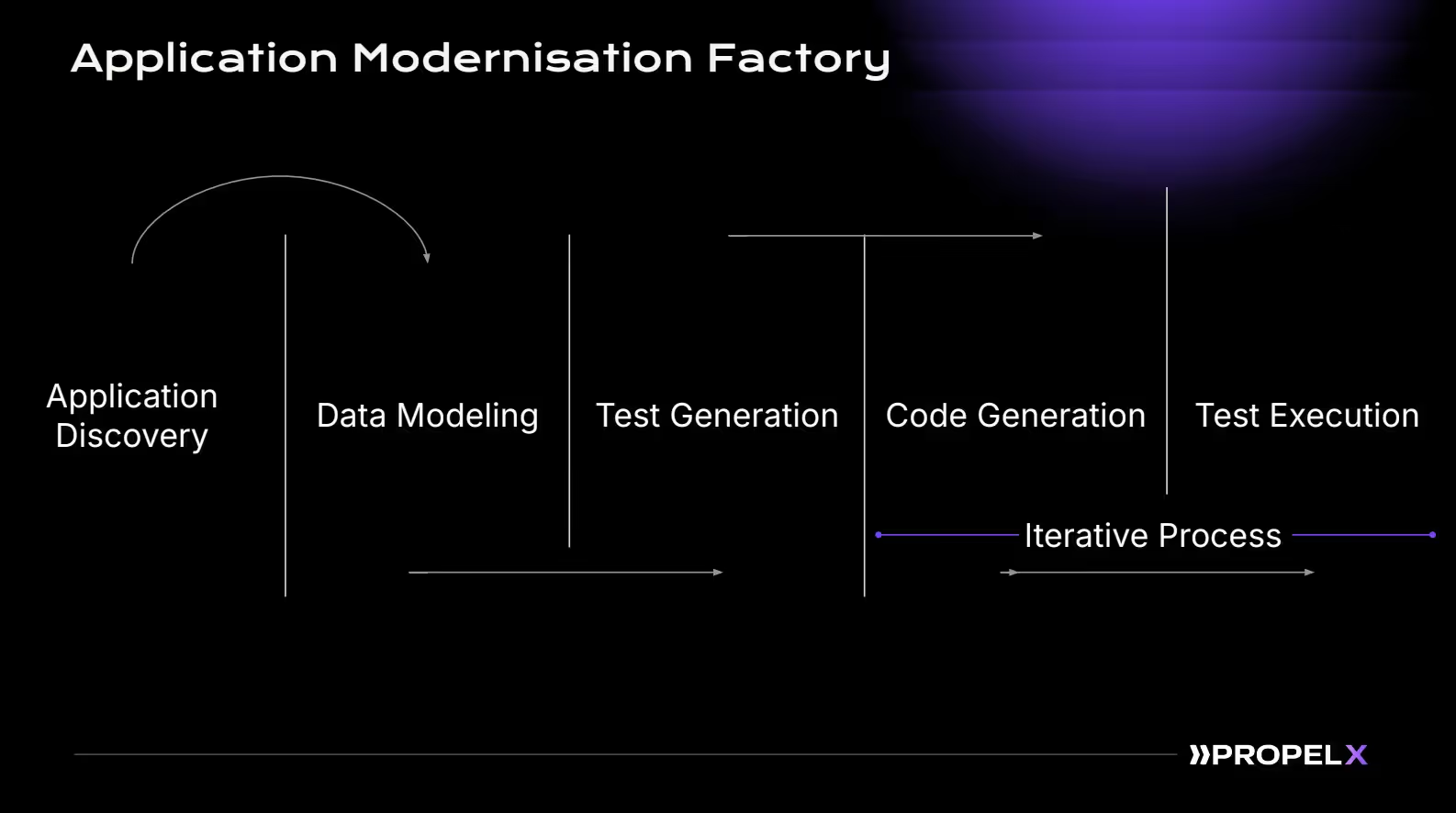Brad Jacobs, Head of Professional Services at MongoDB, brings over seven years of experience leading teams and shaping PS solutions.
At PropelX, he shared valuable insights on how AI is transforming the world of professional services. Rather than presenting AI as a revolutionary concept, Jacobs’ approach highlights MongoDB’s thoughtful, collaborative, and evolving use of AI to enhance service delivery.
AI and the power of asking the right questions: Lessons from MongoDB
In any discussion about AI, it’s crucial to consider the importance of asking the right questions. A well-known reference to this concept comes from The Hitchhiker’s Guide to the Galaxy, where a supercomputer spends millions of years calculating the answer to the ultimate question of life, the universe, and everything, only to deliver the number “42”. However, the problem wasn’t with the answer—it was that no one knew what the actual question was. This anecdote serves as a fitting metaphor for AI today: AI is incredibly powerful, but only when we clearly define the questions we want it to answer or solve.
At MongoDB, Brad and his team have pioneered innovation in the database industry with its NoSQL database, designed for developers who demand flexibility and agility. As the first database company to go public in 40 years, MongoDB’s unique document model allows developers to build cutting-edge applications faster and more efficiently. Through its professional services, MongoDB helps customers harness the full potential of its platform—whether by providing guidance to avoid common pitfalls or assisting in course corrections when issues arise.
Today, as the organization grows rapidly, its professional services team is also focusing on how to leverage AI. They’re not only implementing AI within their own services but also exploring how AI can be used to enhance customer outcomes.
Leveraging AI for operational efficiency and customer success
MongoDB’s approach to AI is structured around three core pillars: internal tools, delivery tools, and customer offerings. These categories reflect how the company uses AI to streamline operations, enhance delivery quality, and empower customers to build cutting-edge AI applications.
1. Internal tools to optimize operational efficiency with AI
Internally, MongoDB has developed CognitumAI, a chatbot designed to drive operational efficiencies by integrating with internal data from platforms like Salesforce and the company’s other PSA tools. Trained on consulting reports and project documentation, the chatbot enables project managers to quickly identify consultants with the required skill sets for upcoming projects, reducing the time spent on resource allocation. Additionally, consultants can use CognitumAI to draft and peer-review customer reports, streamlining the process of delivering high-quality outputs.

Another internal tool, ES 360, is used to capture insights from engagements through a post-action report, allowing consultants to document customer use cases, challenges, and solutions efficiently. While this tool offers valuable data for trend analysis, consultants may find the manual process time-consuming. MongoDB is exploring AI solutions to reduce this burden, automating report generation to save time and improve the overall experience.
AI is also being employed to assist with drafting proposals, leveraging historical data to quickly generate proposals based on customer needs. Brad also mentions that while these tools show promise, widespread adoption has been slow, and there is still significant potential for further internal optimization.
2. AI-powered delivery tools to enhance performance insights
When it comes to delivery tools, MongoDB has developed an AI-driven solution called Jarvis, designed to optimize how consultants assess and manage database performance. MongoDB’s cloud product, Atlas, provides customers with a hosted database-as-a-service. However, like many SaaS solutions, customers often face limited access to critical performance metrics, or if they do have access, they may struggle to interpret the data effectively.

In response to navigating overwhelming amounts of data, the team built Jarvis, an AI tool trained on both metrics and historical consulting reports. Jarvis analyzes the performance of a customer’s database, identifies potential issues, and generates actionable recommendations within minutes. This significantly accelerates the troubleshooting process, empowering the professional team to provide faster and more insightful feedback to customers.
However, as MongoDB’s team has discovered, the true value of AI lies not just in generating data but in interpreting it correctly. While Jarvis delivers accurate recommendations, it still requires human oversight to ensure the insights are both reliable and actionable.
3. MongoDB’s AI Red Team: Exploring AI's potential to redefine the consulting role
As AI continues to advance, one crucial question facing the consulting industry is whether AI will ultimately replace human consultants. Earlier this year, MongoDB launched an initiative to proactively address this question. The initiative, dubbed the “Red Team,” was formed with the intention of exploring how AI could potentially replace certain consulting tasks. The goal wasn’t to incite fear or prompt consultants to polish their résumés, but rather to find ways to harness AI to eliminate tedious, time-consuming tasks and allow services professionals to focus on more valuable work.

Consultants were invited to participate and present ideas on how AI could replace their own roles. One winning proposal, in particular, highlighted how AI could handle much of the data gathering, analysis, and report generation, freeing consultants to focus on higher-value activities and customer engagement. By developing AI agents that can analyze applications and databases, gather metrics, and produce recommendations, this initiative aims to give consultants “super tools” to enhance their productivity and impact.
Although the Red Team initiative is still in its early stages, it reflects MongoDB’s commitment to preparing for an AI-driven future. The goal is not just to protect against the potential disruption AI could bring, but to find ways to pass efficiency gains on to customers while ensuring consultants remain integral to the process. For MongoDB, the focus is on using AI to elevate consultants' roles rather than replace them, helping the company stay ahead of the curve while maximizing value for customers.
Customer offerings
MongoDB’s customer offerings in the AI space fall into two main categories: helping customers build AI applications and facilitating their journey toward data modernization.
Building AI applications often requires tuning models and implementing retrieval-augmented generation (RAG) applications. Recognizing that most customers struggle with fragmented data across disparate databases and applications, MongoDB’s approach began with unifying this data into a single, modernized data layer.
To streamline this process, MongoDB has developed three core offerings.
- Data modernization - The focus with data modernization is on consolidating and organizing customer data.
- Implementing RAG applications - Once the data is ready, the second offering focuses on implementing RAG applications, in collaboration with trusted partners. MongoDB also helps their customers build AI applications using their preferred large language models (LLMs), while also fine-tuning these models to suit specific use cases.
- Choosing the right type of service for the customer - This third offering gives customers the flexibility to choose whether they want a fully guided service, assistance with certain stages, or a fully self-directed approach using MongoDB’s resources and third-party tools.
Earlier this year, MongoDB launched the MongoDB AI Applications Program (MAP) to formalize this approach. This program provides customers with access to MongoDB’s tools, assets, and partner networks, allowing them to build AI applications either independently or with support. While the logical progression typically starts with data modernization, MongoDB often advises customers to begin with a RAG implementation. This allows them to quickly create a minimally viable product (MVP) using sample or synthetic data, demonstrating the value of AI before tackling more complex data challenges.
This strategy reflects the urgency many organizations feel in navigating the AI landscape. And by providing a structured path for AI development, MongoDB empowers its customers to move swiftly and confidently toward building powerful AI applications.
MongoDB’s application modernization factory: Transforming legacy systems with AI
In the enterprise landscape, many organizations are still relying on homegrown applications that were built 10, 20, or even 30 years ago on legacy architectures such as Oracle, SQL Server, Sybase, and mainframes. While MongoDB has made significant strides in capturing market share for net-new applications, the real opportunity lies in modernizing the remaining 80% of legacy systems. MongoDB’s Application Modernization Factory is an initiative designed to help customers leverage AI to transition these outdated applications to modern technology stacks—and in the process, drive Annual Recurring Revenue (ARR) growth.
At the heart of this initiative is an AI-powered process that begins with application discovery. The AI analyzes the existing codebase and database structures, such as tables from Oracle or other legacy systems, and recommends an updated data model. From there, the AI generates test cases—an invaluable resource for customers whose applications lack any formal testing framework. This process not only modernizes their technology stack but also makes it easier for organizations to attract developers interested in working with cutting-edge tools.

Once tests are generated, the AI works to convert the legacy code into modern code, iteratively refining it based on test results. This process continues until the system passes all tests, ensuring clean, functional code. While it’s not yet a fully automated “assembly line” process, the team is moving closer to that vision—what they describe as transitioning from the craftsmanship of a woodworker’s garage to the efficiency of a Tesla gigafactory.
One key takeaway from this initiative is the importance of asking the right questions. Just like the famous Hitchhiker’s Guide to the Galaxy story of the supercomputer Deep Thought, the answer is meaningless without a clear understanding of the question.
In MongoDB’s case, the application modernization project started with a hypothesis: Could AI truly modernize systems? Through rigorous experimentation and collaboration with customers, MongoDB has proven that the answer is yes—AI can be a powerful tool in transforming systems into agile, modern applications. The focus, however, remains on experimentation, learning, and refinement, ensuring that every step of the process leads to greater innovation.
Q&A with Brad Jacobs
1. How will AI impact your talent strategy and resourcing?
A: AI is shifting the skills we need. Traditionally, our consultants were software engineers helping customers build on MongoDB. With AI, the focus moves to data and application architecture at scale. This opens opportunities for our team to grow and evolve, but we’ll also need new hires with specific expertise in these areas. While AI accelerates processes, we’re doubling the size of our Professional Services team over the next year to meet rising demand.
2. How are customers responding to AI-driven modernization efforts?
A: We’re seeing a shift as large enterprises, particularly in banking and insurance, finally embrace AI to modernize their systems. Companies are recognizing the cost savings and innovation potential of modern tech stacks, and we’re seeing increased traction as a result.
3. As we move toward 2025, should organizations focus on replacing standard services and product offerings with AI initiatives?
A: I recommend setting aside a budget for AI experimentation, even without a clear idea of what to replace. This could be through trial subscriptions, contracting out, or building internal tools to improve productivity. The key is to start learning now. It is important to ensure that AI is used to enhance, not replace, the consultant-customer relationship. AI should be seen as a powerful tool—not a catch-all solution—and professionals need to understand how to use it responsibly to maintain trust with clients.

























.webp)